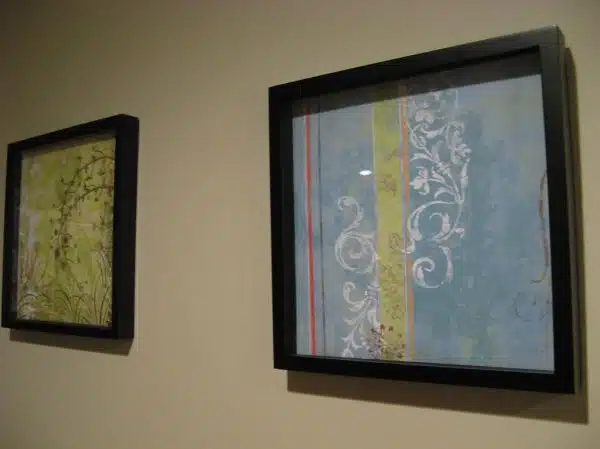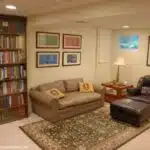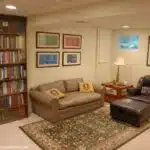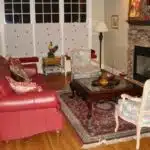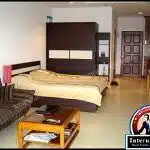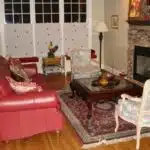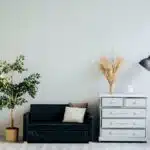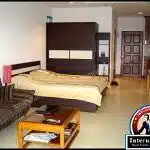Decorating a home can be both an exciting and overwhelming process. It is easy to get lost in the sea of design options, color schemes, and furniture styles. However, with proper guidance and knowledge, decorating your home can become a fun and fulfilling experience that adds personality and warmth to your living space.
One way to approach home decorating is by breaking down the process into manageable steps. By focusing on each room individually, you can create a cohesive design style throughout your home while also tailoring each space to its unique purpose and function. In this article, we will explore the basics of room-by-room decorating, providing you with expert advice on how to approach each room in your home with confidence and ease. Whether you are starting from scratch or simply looking for ways to breathe new life into your existing décor, these tips will help you create a beautiful and functional space that reflects your personal style.
The Living Room: Creating A Cozy Atmosphere
Are you tired of living in a cold and sterile environment? Do you long for the warmth and comfort of a cozy atmosphere? Look no further than your living room. With just a few simple steps, you can transform this space into a haven of relaxation and serenity.
The first key to creating a cozy living room is through lighting. Harsh overhead lights can be jarring and uncomfortable, so opt for softer lighting options such as floor lamps or table lamps with warm-colored bulbs. These will not only provide ample light but also create a calm ambiance that will make you want to snuggle up with a good book or movie.
In addition to lighting, comfortable seating is essential for any cozy living room. A plush couch or armchair invites you to sink in and relax, while soft blankets and pillows add an extra layer of warmth and comfort. Consider incorporating textures such as faux fur or knit fabrics to create a tactile experience that will make you never want to leave your cozy haven.
The Bedroom: A Personal Sanctuary
After creating a cozy atmosphere in the living room, it’s time to move on to the bedroom. This is where you spend most of your time and it should be a place of relaxation and tranquility. Creating a calming ambiance is essential for good sleep and overall well-being.
When decorating your bedroom, focus on creating a cohesive look by incorporating personal touches such as family photos or mementos that bring you joy. Choose calming colors such as soft blues or greens, which have been shown to promote relaxation. Use soft lighting and comfortable bedding to complete the look.
To enhance the relaxing atmosphere of your bedroom, consider adding elements of nature such as plants or flowers. These not only add visual interest but also help purify the air and promote better sleep. Lastly, eliminate any clutter and keep your space organized to create a peaceful environment free from distractions.
As you move through each room in your home, remember that each space can be transformed into a sanctuary with just a few simple changes. In the next section, we’ll explore how to create spa-like serenity in your bathroom.
The Bathroom: Spa-Like Serenity
The bathroom is a sanctuary, a place where we can escape from the stresses of everyday life. It should be a space that promotes tranquility and relaxation, akin to a spa-like experience. From the color scheme to the lighting fixtures, every aspect of the bathroom should be carefully considered to create an atmosphere that soothes both body and mind.
To achieve spa-like serenity in your bathroom, start by choosing calming colors such as soft blues or greens. Consider adding natural elements like bamboo or wood accents to bring warmth and texture into the space. Lighting is also crucial in creating an ambiance that promotes relaxation – opt for dimmer switches or add candles for an added touch of coziness.
DIY projects are a budget-friendly way to enhance your bathroom’s aesthetic while also adding some personal flair. Consider creating your own artwork or repurposing old furniture with a fresh coat of paint. Small details like decorative hooks or unique towel racks can also make a big impact on the overall look and feel of your bathroom. By incorporating these simple yet effective changes, you can transform your bathroom into a serene oasis without breaking the bank.
When moving onto the kitchen, it’s important to remember that this space isn’t just for cooking meals – it’s often the heart of the home. The kitchen should be both functional and stylish, with plenty of storage and counter space for meal prep and entertaining guests.
The Kitchen: Functional And Stylish
The kitchen is the heart of any home, and it should be both functional and stylish. When decorating your kitchen, it’s essential to consider maximizing storage space by choosing cabinets that are both practical and aesthetically pleasing. Open shelving is a popular trend these days, but it may not be the best fit for everyone. Cabinets with pull-out drawers or lazy susans can make accessing items easier while still keeping them out of sight.
In addition to storage, choosing the right lighting is crucial in creating an inviting atmosphere for your kitchen. Task lighting under cabinets can brighten up workspaces, while pendant lights above an island or table can add a decorative touch. Dimmer switches also allow for versatility in mood lighting, making it perfect for entertaining guests or having a romantic dinner at home.
Overall, designing a functional and stylish kitchen takes careful planning and attention to detail. Maximizing storage space and choosing the right lighting are just two aspects to consider when creating your dream kitchen. Next up is the dining room: entertaining with elegance, where we will explore how to create an inviting space that will impress your guests while still being comfortable for everyday use.
The Dining Room: Entertaining With Elegance
Now that we’ve covered how to make your kitchen both functional and stylish, let’s move on to the dining room. The dining room is where you gather with family and friends for meals, making it an important space in your home. When decorating your dining room, it’s important to keep in mind both functionality and elegance.
Entertaining tips are essential for any host or hostess. Whether you’re having a dinner party or just a casual gathering with friends, there are certain things you can do to make sure your guests feel welcome and comfortable. One tip is to set the table in advance with all the necessary items such as plates, utensils, and napkins. It’s also helpful to have extra seating available in case unexpected guests arrive.
Choosing the right dining table is crucial for both style and function. The size of your dining table should depend on the size of your room and how many people will be using it regularly. You’ll want to choose a table that fits comfortably in the space without overcrowding it. Additionally, consider the material of the table. A wooden table adds warmth and texture while a glass or metal table can create a sleeker look. Whatever you choose, make sure it reflects your personal style while also being practical for everyday use.
Moving on from our discussion about creating an elegant and functional dining room, let’s talk about another important space in your home: the home office. This area should be designed for productivity and comfort so that you can be efficient while working from home.
The Home Office: Productivity And Comfort
Imagine a home office with a cluttered desk, uncomfortable chair, and poor lighting. This environment can be distracting and negatively impact productivity. However, by maximizing space and investing in ergonomic furniture, you can create a productive and comfortable workspace.
To maximize space in your home office, consider utilizing vertical storage solutions such as shelves or wall-mounted cabinets. This will free up floor space for other essential items such as an ergonomic chair and desk. When selecting furniture, prioritize comfort over style. An ergonomic chair that provides proper back support and promotes good posture is paramount to avoid chronic pain or discomfort.
In addition to furniture, lighting plays a crucial role in creating a productive workspace. Natural light is ideal; however, if this is not possible, invest in task lighting that reduces eye strain and fatigue. With these elements in place, you can create an environment that maximizes productivity without sacrificing comfort.
Next on our list is the nursery: creating a safe and soothing environment for your little one.
The Nursery: Creating A Safe And Soothing Environment
Moving on from the productive home office, we now delve into the nursery. This room is particularly special as it should be created with care and attention to detail, creating a safe and soothing environment for your little one. When it comes to decorating a nursery, color psychology plays a crucial role in generating an atmosphere of calmness and tranquility.
Choosing colors that are soft and muted such as pastel blues, greens or pinks can evoke feelings of serenity and relaxation. You can also opt for neutral tones like beige or cream which create a warm and inviting ambiance. Avoid using bright or bold colors as they can overstimulate your baby’s senses. Instead, use accents of brighter shades sparingly to add visual interest.
DIY projects are also a great way to add personal touches to your nursery while saving money. Get creative by upcycling old furniture pieces such as dressers or shelves, painting them in calming colors to match the rest of the room’s decor. You could also create your own wall art by framing prints or photographs that have sentimental value. Overall, when decorating a nursery keep in mind that simplicity is key – less is often more when it comes to creating a soothing space for your baby.
As we come to the end of this section on nursery decorating basics, remember that every aspect of this room should be designed with safety in mind – from furniture placement to choosing non-toxic materials. In our next section about the kids’ room: fun and playful design ideas, we’ll explore how you can take things up a notch by incorporating imaginative themes and interactive elements that will spark joy in your child’s heart while keeping them safe at the same time.
The Kids’ Room: Fun And Playful Design Ideas
As we move on to the next room, let’s focus on creating a space that is perfect for your little ones. The kids’ room should be a place where they can play, learn and grow creatively. It is important to create an environment that encourages imagination and fun.
One way to achieve this is by incorporating Fun DIY projects into the room. You can create a wall mural with your child’s favorite cartoon character or paint the ceiling with stars and planets. These projects will not only allow you to bond with your child but also add a personal touch to the room.
Another essential aspect of designing a kids’ room is Storage Solutions for Toys. Children have plenty of toys, and it’s crucial to have sufficient storage space in the room. You can use shelves, baskets, or toy boxes to neatly organize their belongings. This way, your child can easily find their toys while keeping the room tidy.
In summary, when decorating a kid’s room, remember to keep it fun and playful while still being practical. Incorporating Fun DIY projects and Storage Solutions for Toys will help create an environment that sparks creativity while keeping things organized. In the next section, we’ll discuss how to make your guests feel right at home in the guest room: welcoming your visitors.
The Guest Room: Welcoming Your Visitors
Moving on from the fun and playful design ideas for the kids’ room, let’s talk about a space that often gets overlooked – the guest room. As a host, you want to create a welcoming experience for your visitors, but maximizing space and staying within budget can be a challenge.
To maximize space in the guest room, consider investing in multi-functional furniture such as a sleeper sofa or a daybed with built-in storage. These pieces can serve as both seating and sleeping options while also providing extra storage for your guests’ belongings. Additionally, opt for wall-mounted shelves instead of bulky bookcases to free up floor space.
When it comes to budget-friendly options, there are plenty of ways to spruce up the guest room without breaking the bank. Swap out old bedding with fresh linens and accent pillows in coordinating colors. Add some greenery with potted plants or fresh flowers. And don’t forget about lighting – update outdated fixtures with modern options that provide ample light for reading or working.
As you prepare to welcome your guests into their cozy new space, remember that first impressions matter. In the next section, we’ll discuss how to make a great first impression with your entryway decor.
The Entryway: Making A Great First Impression
The entryway is the first impression guests have of your home, so it is important to make it count. Creating a focal point in this area can draw attention away from any imperfections and set the tone for the rest of the home. A statement piece such as an art installation or a unique lighting fixture can be used to create this focal point.
Storage solutions are also crucial in the entryway. Guests may need a place to store their coats and shoes, so incorporating hooks or a coat rack can be both functional and visually appealing. A small bench or console table with drawers can also provide additional storage space while adding to the aesthetic of the area.
By taking these factors into consideration, you can create an entryway that not only makes a great first impression but also serves a practical purpose. Remember to keep it clutter-free and well-organized, as this will help maintain its functionality and appeal over time.
As we move on to discussing outdoor spaces, it’s important to note that bringing the indoors out has become increasingly popular in recent years. Outdoor living areas are no longer limited to basic patio furniture; instead, they now incorporate elements such as comfortable seating arrangements, outdoor kitchens, and even fireplaces. The goal is to create an environment that seamlessly blends indoor and outdoor living spaces, allowing you to fully enjoy your home’s natural surroundings.
The Outdoor Space: Bringing The Indoors Out
Outdoor furniture is an essential element for creating an inviting outdoor living space. Selecting pieces that are comfortable, durable and aesthetically pleasing is important for the overall look and feel of the outdoor area. Landscaping is the next step to consider when creating the perfect outdoor space. Incorporating plants, trees and decorative elements can enhance the beauty and ambiance of the area. Lighting is also an important element in room decorating as it can set the mood and create an inviting atmosphere. When selecting outdoor lighting, it is important to consider the overall theme and style of the outdoor area. The right lighting can make a big difference in the appearance of the outdoor space.
Outdoor Furniture
Outdoor furniture is an essential element of any outdoor space. It not only provides comfort but also adds aesthetic value to the area. When choosing outdoor furniture, it is important to consider the materials and maintenance required to keep them in good condition. Outdoor furniture made from materials like teak, aluminum, and resin are durable and require minimal maintenance.
Choosing the right style and size of outdoor furniture is crucial for ensuring a cohesive look that complements the overall design of your outdoor space. Consider the style of your home’s interior when selecting your outdoor furniture. If you prefer a modern look, opt for sleek and contemporary designs. Alternatively, traditional designs can create a timeless feel.
Regular cleaning and maintenance will ensure that your outdoor furniture stays in good condition for years to come. Use mild soap and water to clean most types of outdoor furniture, but avoid using harsh chemicals or abrasive cleaners. Covering your furniture when not in use can also help prolong its life span. By investing in quality outdoor furniture and properly maintaining it, you can create an inviting and comfortable outdoor space for yourself and your guests to enjoy.
Landscaping
After choosing the right outdoor furniture for your space, it’s time to focus on landscaping. Proper gardening can enhance the overall beauty of your outdoor space and add value to your property. When planning your landscaping, consider the climate and soil type in your area, as well as the amount of sunlight and shade your outdoor space receives.
One of the most important gardening tips is to choose plants that are well-suited for your region. Native plants often require less maintenance and water, making them an eco-friendly choice. Incorporating a mix of evergreen and seasonal plants will ensure that your outdoor space looks beautiful throughout the year. You can also add texture to your garden by combining different shapes and sizes of plants.
Outdoor lighting ideas can also play a significant role in enhancing the beauty of your outdoor space. Lighting can create a cozy atmosphere while also highlighting key features like trees, water features, or sculptures. Solar-powered lights are an excellent option for those who want a sustainable and cost-effective lighting solution. Don’t forget to consider safety when installing outdoor lighting – use lights to illuminate pathways and stairs for easy navigation at night. By incorporating these gardening tips and outdoor lighting ideas, you can transform your outdoor space into a peaceful oasis that you can enjoy year-round.
Lighting
As we continue to explore the topic of ‘The Outdoor Space: Bringing the Indoors Out’, let’s focus on one aspect that can significantly enhance the beauty and functionality of your outdoor area – lighting. Modern lighting fixtures can provide a warm and inviting ambiance while illuminating key features of your outdoor space. Choosing the right bulbs and placement is crucial in creating a cozy atmosphere that you can enjoy both during day and night.
When selecting modern lighting fixtures, consider how they will complement and enhance your overall outdoor decor. Choose styles that match your furniture and accessories while also providing adequate lighting for your needs. LED lights are an excellent option for those who want to save on energy costs while still enjoying bright, long-lasting illumination.
Choosing the right bulbs is also essential in creating an inviting atmosphere in your outdoor space. Warm white bulbs create a cozy ambiance, while cool white bulbs provide brighter illumination perfect for entertaining guests or reading outdoors at night. Don’t forget to incorporate dimmer switches into your lighting design, allowing you to adjust the brightness according to your preferences. By carefully selecting modern lighting fixtures and choosing the right bulbs, you can create a beautiful and functional outdoor space that you’ll love spending time in.
Choosing Colors: Tips And Tricks
When it comes to choosing colors for your room, there are many tips and tricks that can help you make the right decision. One important aspect of color selection is creating contrast. This can be achieved by using complementary colors or pairing light and dark shades together. By doing so, you can add depth and dimension to your space.
Another way to add interest to a room is by incorporating patterns. Whether it’s through wallpaper, curtains, or throw pillows, patterns can add texture and visual appeal. When selecting patterns, consider the overall color scheme of the room and choose options that complement or contrast with it.
When selecting colors and patterns for a room, keep in mind that balance is key. Too much of one pattern or color can overwhelm the space and detract from its overall appeal. Take time to experiment with different combinations until you find the perfect balance for your taste and style.
Moving on from colors and patterns, let’s talk about furniture selection: finding the perfect pieces.
Furniture Selection: Finding The Perfect Pieces
1.When considering furniture pieces, it is important to consider the type of furniture needed for the room, such as seating, storage, and accent pieces. 2. Quality and cost are often a major factor in furniture selection, as it is important to find pieces of good quality that fit both the desired aesthetic and budget. 3. Space planning is a key element to furniture selection, from determining the size of the pieces to taking into account the size of the room. 4. Taking accurate measurements of the room and furniture pieces can help to ensure the pieces will fit in the desired space. 5. Choosing furniture pieces with multiple functions can help to maximize the available space and provide more versatility in the room. 6. When selecting furniture, it is important to consider the type of pieces needed, the quality and cost, and the space planning to ensure the perfect pieces are chosen.
Types Of Furniture
When it comes to furnishing a room, selecting the right furniture pieces is crucial. Furniture not only serves a functional purpose, but it can also set the tone for the overall design aesthetic of the space. One of the first decisions that needs to be made when selecting furniture is whether to go with classic or contemporary pieces. Classic furniture styles are timeless and elegant, often featuring ornate details and intricate carvings. On the other hand, contemporary furniture tends to have clean lines and simple shapes, creating a more minimalist look.
Another important consideration when selecting furniture is whether to match all pieces or mix and match different styles. Matching furniture sets can create a cohesive look in a room, but mixing different styles can add interest and personality to the space. For example, you could pair a classic sofa with modern accent chairs or mix vintage and contemporary pieces for an eclectic vibe.
Ultimately, the key to successful furniture selection is finding pieces that work together harmoniously while reflecting your personal style. Take into account factors such as color scheme, scale of the room, and functionality needs when making your decisions. Whether going with classic or contemporary styles, matching or mixing and matching furniture pieces, make sure that they fit seamlessly into your overall vision for the room.
Quality & Cost
When it comes to furnishing a room, one must always balance quality and cost. Prioritizing expenses for decorating can be challenging, especially when trying to achieve a certain look or style. Some may assume that expensive furniture is always of better quality, but this is not necessarily the case. It is important to do research on brands and materials to ensure that you are getting the best bang for your buck.
When selecting furniture pieces, it may be tempting to opt for cheaper options in order to save money. However, investing in higher-quality pieces can actually save you money in the long run. High-quality furniture is often more durable and less likely to need replacement or repairs, ultimately leading to cost savings over time. It is also worth considering purchasing second-hand or vintage pieces, as they can often be found at a lower cost while still maintaining great quality.
In summary, when selecting furniture pieces for a room, finding the perfect balance between quality and cost is key. Prioritizing expenses for decorating can help guide decision-making when it comes to purchasing furniture items. By investing in high-quality pieces and considering second-hand options, one can create a beautiful and functional space without breaking the bank.
Space Planning
When it comes to decorating a room, selecting the right furniture pieces is crucial. However, simply choosing high-quality and stylish items is not enough. One must also consider space planning in order to maximize the functionality and flow of the room. By utilizing design software or seeking the advice of a professional, one can create a layout that optimizes the available space while still achieving their desired aesthetic.
Design software can be incredibly helpful when it comes to space planning. These programs allow users to input room dimensions and drag-and-drop furniture pieces to create a virtual layout. This allows for easy experimentation with different configurations and helps ensure that all furniture items fit properly within the space. Additionally, design software can provide 3D visualizations of the room, allowing for a more accurate representation of how everything will look once it is set up.
In addition to utilizing design software, incorporating room dividers can also aid in space planning. Dividing a large room into smaller zones can make it feel more functional and intimate. Room dividers come in many forms, from bookcases and screens to curtains and sliding doors. By strategically placing these dividers throughout the room, one can create separate areas for lounging, dining, or working without sacrificing overall flow or style.
Accessories And Decor: Adding The Finishing Touches
Decorating tips for adding accessories and decor to a room can be overwhelming, but there are simple ways to achieve a cohesive look. One way is to choose a color scheme and stick with it. This means selecting a few colors and incorporating them throughout the room in various ways. For example, if you choose blue as your main color, you could incorporate it into throw pillows, curtains, vases, or wall art.
DIY projects are another great way to add personal touches to a space. This could include creating your own artwork or repurposing items you already have in your home. A popular trend is upcycling furniture by painting it or adding new hardware. Not only does this create a unique piece for your space, but it also saves money on buying new furniture.
When choosing accessories and decor, it’s important to consider scale and proportion. A small vase on a large coffee table will look out of place and unbalanced. Instead, opt for larger pieces on larger surfaces and smaller pieces on smaller surfaces. Additionally, layering textures adds depth and interest to a space – mixing materials such as wood, metal, glass, or fabric creates visual appeal.
Incorporating accessories and decor into a room is the final step in creating an inviting space that reflects your personal style. By following these decorating tips and incorporating DIY projects into your design plans, you can create an atmosphere that feels like home while staying within budget constraints. With attention paid to scale, proportion, texture, color scheme choices among other things mentioned above; putting together a cohesive design scheme will be easy in the next section of this guide!
Putting It All Together: Creating A Cohesive Design Scheme
Creating a cohesive design scheme is essential in achieving an aesthetically pleasing and functional room. One way to achieve this is by creating a focal point, which could be a statement piece of furniture, artwork, or even a unique lighting fixture. The focal point serves as the centerpiece of the room, drawing the eyes towards it and tying everything together.
Mixing patterns and textures also plays a significant role in creating a cohesive design scheme. However, it’s crucial to ensure that the patterns complement each other rather than clash. A simple rule of thumb is to mix patterns with different scales; for instance, pairing small floral prints with larger geometric patterns creates visual interest without being overwhelming.
Finally, it’s important to consider color when creating a cohesive design scheme. While incorporating various colors can add depth and dimension to a room, limiting the color palette helps tie everything together. Choose two or three main colors and incorporate them throughout the space in varying shades and tones. Remember that achieving cohesion doesn’t mean everything has to match perfectly; instead, focus on creating harmony through careful consideration of all elements in the room.
Conclusion
Creating a cohesive design scheme for your home can be a daunting task. However, with the right tips and tricks, you can turn each room into a personalized sanctuary that reflects your style and personality. When it comes to decorating, it’s essential to choose colors that evoke the desired mood and atmosphere in each space. The right furniture pieces and accessories can add dimension and character to any room.
In addition to color selection and furniture choices, it’s crucial to consider functionality when designing your living spaces. A well-designed room should not only look great but also serve its purpose. With these basic decorating principles, you’ll be able to create a comfortable, stylish, and functional home that you’ll love spending time in. Remember, every room should tell a story and reflect your personal style. By following these guidelines, you’ll have a beautiful home that is uniquely yours!
Image Credits
- “Decor – Basic Grey paper framed in 12×12” by for_ladybug (featured)

